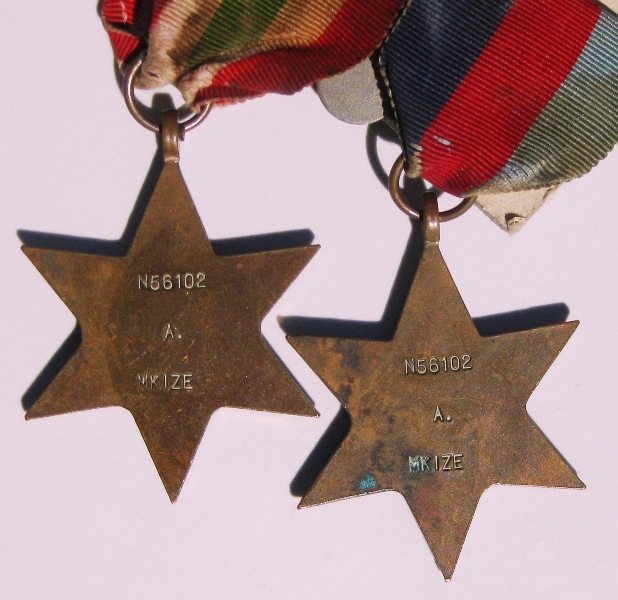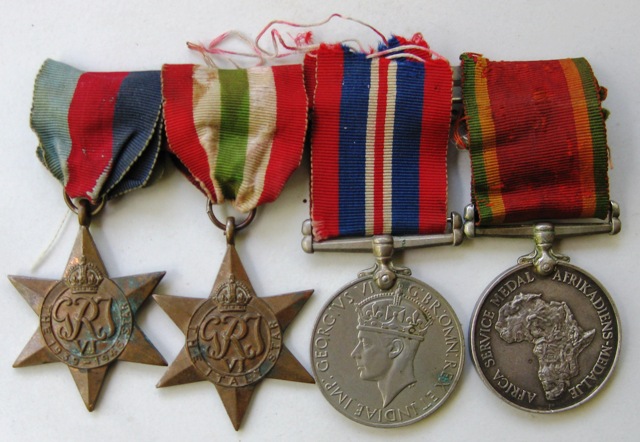-
Posts
858 -
Joined
-
Last visited
-
Days Won
6
Content Type
Profiles
Forums
Blogs
Gallery
Events
Store
Posts posted by Brett Hendey
-
-
Thank you for the two remarkable stories. Those two medals certainly ended up in the right hands!
Regards
Brett
0 -
Thank you for a most interesting post. That is indeed a wonderful story. Basutoland (now Lesotho) is renowned in the palaeotological world for its dinosaur fossils, but even more so now for some of the earliest fossil mammals found anywhere in the world. The remains of these tiny creatures were spotted by sharp eyes during the cleaning of much large dinosaur bones. I spent 25 years working at the South African Museum in Cape Town, and my first fossil-collecting trip in 1962 was to Lesotho and the nearby northern Cape Province, hence my interest in this post.
Also, I now have a particular interest in the Anglo-Boer War, and I had not known of QSA medals being awarded to civilians in Basutoland. Such a medal would be as rare as the mammal fossils from that country!
Regards
Brett
0 -
What an amazing story! Thank you for posting it. It would boggle the mind of anyone now employed by the South African Post Office. They could all guarantee that such an item would never reach its destination.
Regards
Brett
0 -
Herman
Thank you for this interesting post. I like the mixture of Dutch and British medals, and I can understand why veterans would choose to wear both, even if it was officially not permitted.
Regards
Brett
0 -
-
In a word, 'Yes'. I have (?had) a list of the prefixes used on South African WWII medals that I will,post later.
Regards
Brett
0 -
Rob
I have forwarded your post to a South African PoW collector. Hopefully, he will be able to help you.
Regards
Brett
0 -
The NMC men did not use spears on active service. The men of colour that did go to North Africa and Italy were all in non-combatant roles. The black soldiers drilled with spears instead of rifles, because, as Brandon wrote, the authorities did not want to arm them with rifles. The NMC were used to guard properties and installations in South Africa and I expect that they were then armed with spears to be used with lethal intent.
0 -
It is indeed a wonderful group, Rob, which is fortunate to have found its way into your safe hands. Such materials are easily dispersed and their combined significance is lost forever. Thank you for sharing with us.
Regards
Brett
0 -
Steve
If he was indeed with Lord Chelmsford then it adds value to the medal. I have medals to men of three of the Colonial mounted regiments that went out on patrol under Major Dartnell in search of the Zulu army. I had to pay a premium to secure them. Dartnell's patrol was joined by Lord Chelmsford with Imperial infantry that might have included your man, so it will have a special appeal to some people.
Regards
Brett
0 -
These medals vary in value from a few hundred GB pounds to many thousands. One sold within the last month for 40,000 GBP, a new record for a medal of its kind. You need to give details of the recipient, his regiment, and details of his service.
Brett.
0 -
A great assemblage and congratulations on reuniting it.
Regards
Brett
0 -
That would be a great, but macabre, addition to someone's collection! Thank you for an interesting and unusual thread.
Regards
Brett
0 -
Hi Demir
I found the thread about my medal (see link above). I wonder if anyone can add to the controversy?
Regards
Brett
0 -
Demir
I bought a similar medal several years ago and it was later identified as a fake. I seem to remember that it was on this forum that this happened. Perhaps someone else remembers the thread, but, if not, I will try to find it later today.
Regards
Brett
0 -
Both assegais have the long shafts that characterise throwing weapons. If the one with the large blade started out as an iklwa (stabbing spear) it would have had a much shorter shaft with a flared butt end.
Brett
0 -
John
That must certainly be the 'star' in your collection. Congratulations on finding the medal, and thank you for the interesting account of the incident.
Regards
Brett
1 -
In my opinion, this is certainly the 'real thing'. The blade of the spear is attached to the shaft by a section of skin from the tail of a cow. The tail section is put on when it is 'wet' (i.e. fresh), and it shrinks as it dries and makes a perfect, long-lasting connection.
As far as I know, this hafting technique has not been used by the Zulus for a very long time. Although it may not to precisely date the spear in question, I would be happy to have it as 19th Century.
Brett
0 -
I have the similar wings of a SAAF fighter pilot from the tunic he left with his father in 1943 while on leave after the North African campaign. He returned to his squadron and went to Italy, where he was shot down and killed. His father gave me the wings and all the buttons from the tunic. I will post a photograph later.
Brett
0 -
Rob
Thank you for sharing your great POW collection with us. I have a friend who has collected a number of medal groups to South Africans captured during WWII, and, like you, he has unearthed some very interesting stories about them.
Regards
Brett
0 -
A South African heavy artillery brigade of 4.7 inch and 4 inch naval guns had already served in German South West Africa in 1915. It was reconstituted as a regiment of five batteries for service in Europe. It was armed with 6 inch howitzers. The regiment was affiliated to the Royal Garrison Artillery, and each battery was given a RGA number. Officers of the regiment were awarded 11 DSO's, 1 OBE, 1 MBE, 1 bar to MC, and 26 MC's. Other ranks also received many awards. The SAHA has an appendix devoted to it in the book 'The South African Forces in Europe' by John Buchan (Thomas Nelson & Sons).
Brett
0 -
It is very common. Also three units. This came about because most men were discharged after the end of the German South West Africa campaign in 1915. They then joined units that fought in German East Africa in 1916 onwards, where many were invalided with malaria. Back in South Africa they could then join another unit to fight in Europe in 1917/8.
Brett
0 -
I think it might be South African Heavy Artillery, but I will check later.
Brett
0 -
A spectacular decoration and papers! Thank you for showing it. I presume the items are not in a museum in Jordan?
Regards
Brett
0






The Korean War is NOT forgotten
in Modern Campaigns and Conflicts
Posted
That is indeed a very nice bar! Thank you for showing it. Whenever I see additions to this thread, I feel the urge to go back to collecting Korean War medals again.
Regards
Brett